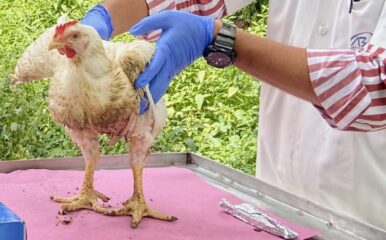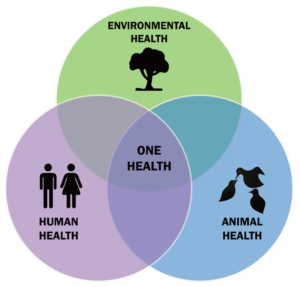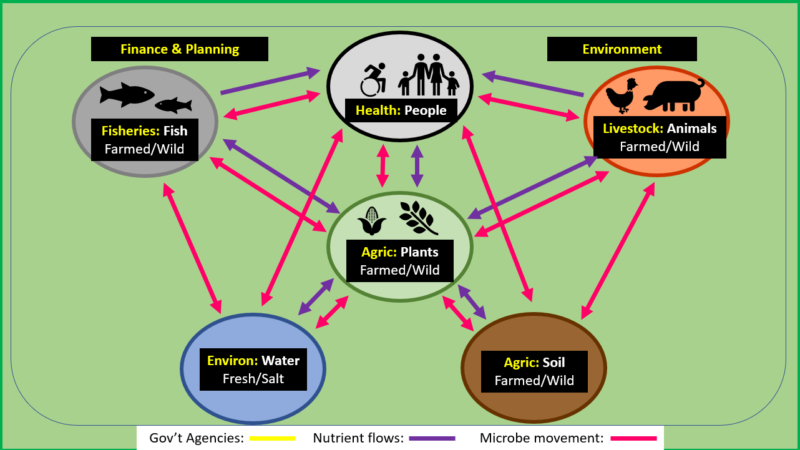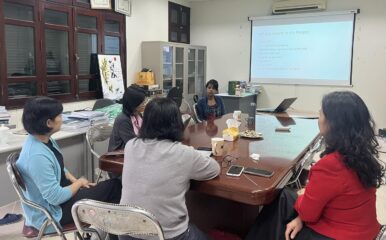
One Health in the time of COVID-19 and climate change
Published on 03/11/2021

Stenbocki Maja/flickr
View this page in:
VietnameseFor many of us, One Health entered our vocabulary during the time of the high pathogenic avian influenza H5N1 pandemic in the first decade of this century. As the world worked to contain the impact of H5N1, the One Health paradigm was widely employed to highlight zoonotic diseases (diseases which can transmit from animals to people and vice versa) and the role of animals in their genesis and transmission.

The three-circle One Health diagram has commonly been used to represent human, animal and environmental health. However, in most cases the emphasis was limited to disease transmission from farmed domestic animals and wild animals located in the ‘environment’ to humans.
As this 21st century unfolds, it’s become increasingly clear that emerging diseases of zoonotic origin are not the only problems facing us. The impact of humans on the environment is also leading to more frequent and severe threats such as extreme weather events, biodiversity loss, deforestation and soil degradation.
Intensive agriculture
More intensive agricultural practices are frequently cited as exacerbating these threats due to significant expansion in production, numbers of animals farmed and the amount of and areas of land cleared since the 1950s.
The positive gains from increased agricultural production reflected in declining numbers of undernourished people stalled in 2015. Since then, absolute numbers of undernourished people have continued to grow, and the health and economic crises generated by the COVID-19 pandemic have resulted in significant increases to food and nutrition insecurity, threatening to set back progress even further.
With micronutrient deficiency affecting over two billion people worldwide, malnourishment is now also a common feature across all countries, irrespective of their economic ranking.
R&D underfunding
Prior to the COVID-19 pandemic, the services charged with animal and plant disease prevention and control were already tackling multiple challenges. Chronic underfunding of agricultural research and development has contributed to the spread of African swine fever (ASF) which has been causing huge numbers of pig deaths and impacting severely on household food security and social obligations in Africa and Asia for too many years. The continuing spread of the fall armyworm is decimating essential staple crops such as maize, directly impacting human food chains and animal feed value chains.
Multiple threats
Instead of trying to respond to each of these issues one by one, it’s time to explore the factors driving these negative trajectories and seek solutions that simultaneously address multiple threats. Cooperation among interdisciplinary and multisectoral teams is needed to safeguard agricultural production and public health from natural disasters and boundary-crossing diseases and to ensure that people have access to safe, nutritious and healthy food.
By focusing on increasing sustainable practices in agriculture and improving the overall health and wellbeing of humans, animals and the environment, the One Health approach can be transformative. As animal-source food plays a crucial role in nourishing people efficiently, especially women and children, everyone involved must engage in and contribute to discussions on the transformation of food systems while simultaneously reducing the negative impact of animal agriculture on Earth systems.
This requires us to take a more holistic, systems-based perspective regarding One Health stakeholders and ecosystems, including nutrient and microbe pathways.

In the lead up to the UN Climate Change Conference (COP26) in Glasgow, the UN Secretary General has warned us all that ‘We are all in the same boat, and we have to pull together’ to substantially reduce greenhouse gas emissions by 2030. By adopting low carbon, agroecological practices, agriculture, including animal agriculture, can be part of the required solution. These same agroecological animal agriculture practices also facilitate nutrient cycling and have reduced risk of the emergence and spread of infectious disease.
One Health provides us with a mechanism to tackle human, animal and environmental health holistically to avert future health crises and restore a healthy planet. Going forward we will do well to listen to and act on the words of the Poultry Hub’s own Prof Rajib Dasgupta and colleagues, who urge us to build ‘One Health community networks and promote the doctrine of ‘Oneness.’
Robyn Alders, AO, is Coordinator of the One Health Poultry Hub’s Roadmap Series of discussions. A global health security expert, she is Senior Consulting Fellow with the Global Health Programme, Chatham House, UK; Honorary Professor, Development Policy Centre and Institute for Climate, Energy and Disaster Solutions, Australian National University; and Chair of the Kyeema Foundation.


